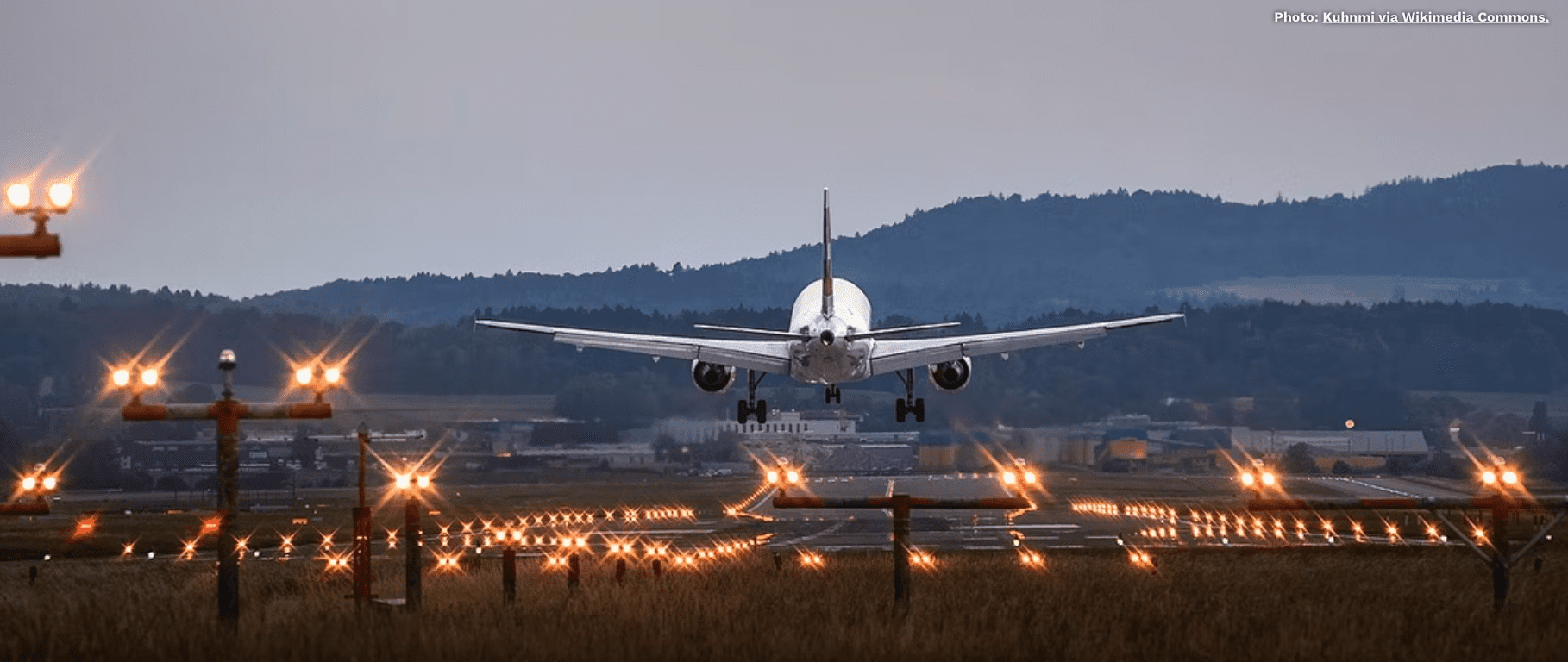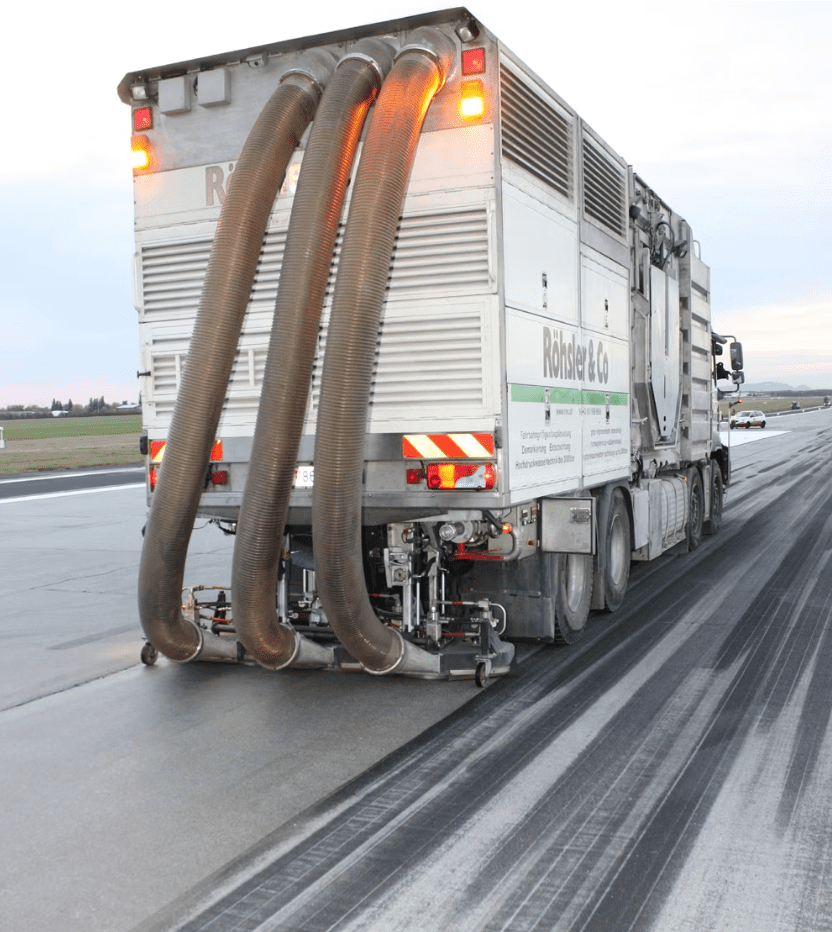Every time an airliner lands, each tire leaves behind a pound to a pound and a half of rubber on the runway.

Have you ever wondered how they remove rubber from airport runways? Several methods are used to tackle the problem, but before we get into that, how does the rubber end on the runway in the first place?
If you have watched airliners landing, you would have noticed that there is a puff of smoke as soon as the wheels make contact with the runway. This occurs because the wheels are static, unlike the aircraft moving through the air.

Friction and heat cause rubber to adhere to the runway
The sudden contact with the ground causes friction and heat, creating a chain reaction that allows rubber from the tires to polymerize and adhere to the runway’s surface. The polymerization continues until the wheels’ speed matches the aircraft’s speed.
Every time a commercial airliner lands, it is estimated that each tire leaves behind between one and one and a half pounds of rubber. As most aircraft try and land on the same spot, the rubber builds up and needs to be removed for the following reasons:
- It can cover runway markings and confuse pilots
- It could reduce breaking and ground handling performance
- It may become slippery when wet, causing runway overruns or lateral slides.
For these reasons, airports must remove rubber from the runways; they use several techniques to achieve positive results. A guideline airports can use is the Federal Aviation Administration (FAA) in the United States. They say airports with 210 or more daily landings should check for rubber deposit build-ups once a week.
Methods for removing rubber from runways
Chemical solvents
The chemicals used depend on whether the runway is concrete or asphalt. The area where the rubber has stuck to the runways is sprayed with the chemicals and left until they have broken down the rubber. What is left is then removed using low-pressure water. Because nearly all chemicals used need special handling and are harmful to the environment, airports prefer to use other methods for runway rubber removal.
High-pressure water blasting

Like sandblasting, abrasive particles are propelled through a machine and then targeted on the rubber. While this is an environmentally safe method, it can also damage the runway’s surface and leave debris that can damage aircraft.
Hot compressed air
A mixture of air and gas is fed into a combustion chamber and emitted onto the runway at a very high temperature. The hot air and gases cause the rubber particles to break up and sheer off, leaving behind small carbon deposits that can be brushed off the runway.
Mechanical removal
The mechanical removal of rubber from runways can include grinding, wire brushing, scraping with blades, and milling. Every mechanical form of runway rubber removal also takes a thin 1⁄8–3⁄16 inch (3–5 mm) layer off the runway’s surface. However, this also removes the grooves intentionally cut into the runway’s surface to prevent planes from hydroplaning after heavy rainfall.
Because runway surfaces are grooved to allow water to drain from the surface, this is the least preferred method.
Source: Simple Flying

Warning: Illegal string offset 'cookies' in /home/u623323914/domains/eng.bayviet.com.vn/public_html/wp-includes/comment-template.php on line 2564